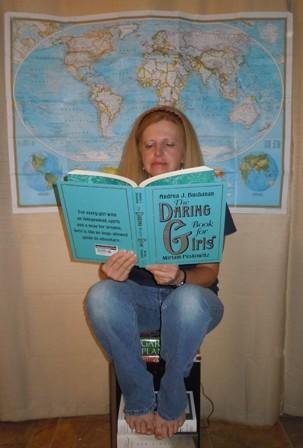Cheryl Hughes: Worlds Other Than Our Own
In New Orleans, there is an insectarium dedicated entirely to the research and cataloging of bugs. I know this because my daughter, Nikki, and I paid a visit to the place three weeks ago. I have always been a fan of worlds not my own. I’ve toured planetariums and space museums with my granddaughter, and I’ve gone to aquariums with Nikki since she was a little girl. For me, the take-away has always been the same. There is so much going on out there that has so little to do with me. The insectarium gave me a very different impression.
The world of bugs is a world not my own in the sense that it can operate without me; it is my world, however, in the way it affects my day to day life. At the museum, I saw millipedes and beetles chewing their way through rot and waste at impressive rates. It was brought to my attention that I would be up to my eyeballs in disgusting stuff if it weren’t for these small creatures. For instance, one dung beetle can bury dung that is 250 times heavier than itself in one night.
Beetles are nature’s food processors, and there are multitudes of them. On the wall above a colorful display of the bugs were these words, “If you could line up one member of each animal species in the world, every fourth creature would be a different beetle.” The British scientist, J.B.S. Haldane, was asked by a clergyman what he could deduce about God from a study of nature. Haldane replied, “God has an inordinate fondness for beetles.”
Another impressive feature of the museum is a tunnel running under a colony of leaf cutter ants. The sound of the ants at work was amplified, and their comings and goings really did sound like boots on the ground, supporting the analogy about ants moving about like an army. As I stood in the tunnel, I was once again reminded there is another world right under my feet.
Caterpillars and chrysalises and worms and moths were also well represented at the insectarium. When I saw a familiar green worm, I told Nikki, “We always called these tobacco worms.” We read the plaque above the specimen. Horned tobacco worm it said. We both laughed. We were expecting a more scientific-sounding name. The case next to that tobacco worm contained the moth the worm would eventually morph into. I always thought it was the tobacco worm I was finding on my tomatoes. Turns out, there is also a tomato worm that looks like the tobacco worm. The way you can tell the difference: the tobacco worm has straight white lines on its body, like cigarettes; the tomato worm has V-shaped lines—think of vine-ripened. Another misconception about the tobacco worm is that the white eggs it carries around on its body are its own. They are actually the larvae of a wasp deposited there as parasites. (If you want to know how much you don’t know, just visit a museum, any museum.)
Connected to the insectarium in New Orleans is an Audubon butterfly garden. It’s a beautiful place filled with flowers, fermenting fruit and lights. Visitors are cautioned to move slowly through the exhibit, because the butterflies are constantly landing and taking flight. There were windows located at the top of the room. On and around the windows, hundreds of butterflies were thrashing at the glass as if trying to escape. Below them, the room abounded with food, water and light, but they wanted what was on the other side of the glass. I saw my unreasonable self in these small creatures.
I read once that the story of the Tower of Babel (Gen. 11:4 – 9) was God casting his vote for diversity. I think that story pales in comparison to the bug world, a world other than our own, right beneath our feet.
- Log in to post comments



























